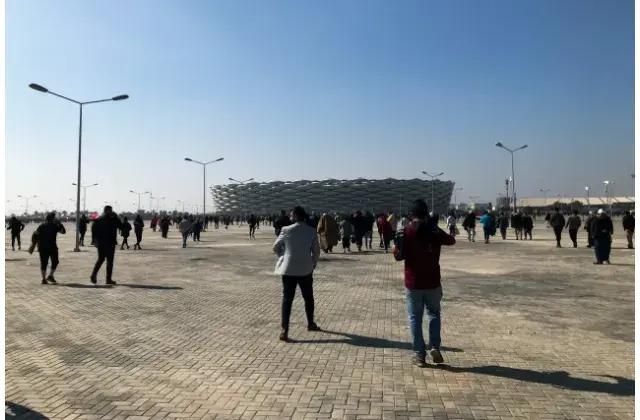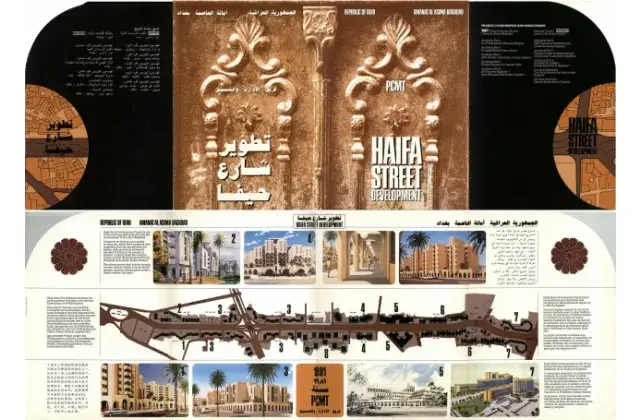The Iraq-Iran War - Saddam's Miscalculation and the Eight Years War (1980 - 1988)

In 1980, Iraq generated oil export revenues of USD 21.3 billion and had available foreign exchange reserves of USD 35 billion. Saddam’s foreign policy was subordinated to the goal of converting the huge financial potential into political and military power. But, Saddam’s incipient dictatorship was shadowed by the Islamic Revolution in Iran in 1979 which brought Ayatollah Ruhollah Khomeini to power. Iran has had Shiism as its state religion since 1501. Ayatollah Khomeini pursued a Pan-Islamic ideology, in contrast to Iraq’s Arab nationalism. Saddam, with a Sunni background, possessed a fairly developed interpretation of Islam in his point of view and how to instrumentalize it politically. This included the need to fend off the rise of domestic Islamist movements and the Iranian revolution. Tensions between Iran and Iraq were additionally shaped by Khomeini’s foreign policy, “export of the Islamic revolution”. He called all Shias in the world, including Iraqi Shia, to join his revolution. After two attacks on Iraqi executives, Saddam banned the Dawa Party, executed his leader Muhamed Baqr al-Sadr on 13 April 1980, followed by mass arrests and execution of Shias, tens of thousands were deported to Iran, and thousands more fled.
Even though the main threat had been shattered, Saddam wanted to change the balance of power in the region in his favour. On 19 September 1980, he resigned from the Algiers Treaty, which regulated the boundary line in Shatt al-Arab and the following day, he invaded Iran. Originally, Saddam intended a Blitzkrieg victory. He had invested heavily in Iraq’s military, buying large amounts of weaponry, had available the financial capacity and expected the Iranian government to be weak. Contrary to his initial hypothesis, his invasion led to the mobilisation of all Iranian forces and counterforces. Recognizing his miscalculation, Saddam announced a ceasefire on 25 December 1980 with conditions that could not be accepted by Iran. Instead, Saddam had strengthened the mullahs’ rule with his war. From the summer of 1982, Iran ensured the extension of the war.
Both countries received differing levels of support from the region and wider world. While Libya and Syria were Iran's only Middle Eastern allies, Iraq received financial support from the Gulf Cooperation Council (GCC) in the amount of USD 50 billion. Worthwhile noting is the role of the United States. From 1984 onwards, the USA supplied Iraq with American military equipment. When Iraq could no longer pay for its armament needs, the USA used debt restructuring procedures and granted loans to Iraq. In 1987, Iraq imported huge amounts of American produce, financed through a supplier loan. In the 1980s, the U.S. saw Iraq as a strategic partner in the Iran-Iraq War. By providing support to both sides, there was a significant recycling of petro-dollars.
On 20 July 1987, the UN Security Council passed the resolution for ceasefire No. 598. Saddam accepted immediately, Iran only in the summer of 1988. Using this vacuum, Saddam implemented his disastrous Al Anfal campaign in the Kurdish region. The war cost Iraq USD 452.6 billion, and Iran invested USD 644 billion. The Eight Years War, as it is popularly known in Iraq, had disastrous consequences for the Iraqi population and the fate of many soldiers remains unknown. On 20 August 1988, the UN Resolution 598 went into effect, officially ending the war and reinstating the pre-war borders. As the news of the end of the war broke, the whole of Iraq went out into the streets, celebrating the end of eight years of horrific and traumatic warfare.
The Iran-Iraq War cannot be viewed without a brief review of Iraq’s ‘secret’ chemical, biological and nuclear weapon programme. ‘Project 922’, under the cover name of State Enterprise for Pesticide Production, was Iraq’s main chemical weapons research, development, and production facility located in Saladin Governorate, 40 km south west of Samarra. It was built in the early 1980s and active until the 1991 US-coalition bombings. The facility produced chemical weapons agents that were used against Iranian forces and civilian Kurds. The Tuwaitha Nuclear Research Center (starting in 1967) was the main nuclear site in Iraq that was involved with handling nuclear material. To take one example of the human cost of Iraq’s chemical weapons programme, during the Iran-Iraq War, Saddam let contaminated trash from the centre be brought to Ahwar to poison the water and therefore eliminate Iranian forces and their ‘co-conspirators’ (indigenous people).
This article was written by Hella Mewis and is licensed under CC BY-NC 4.0.






